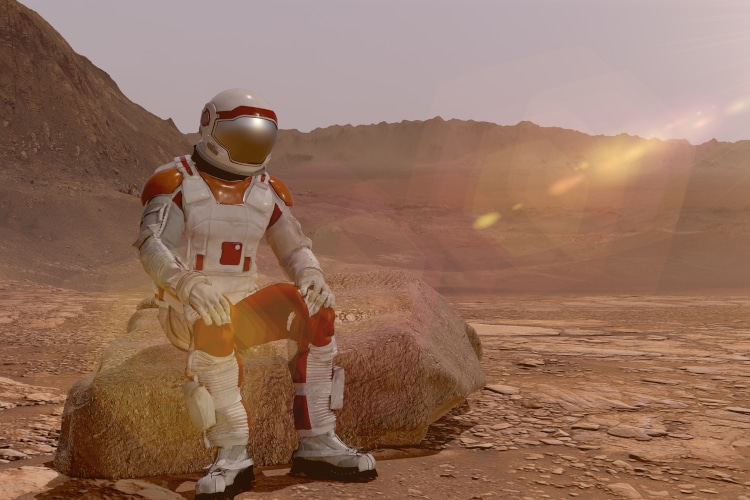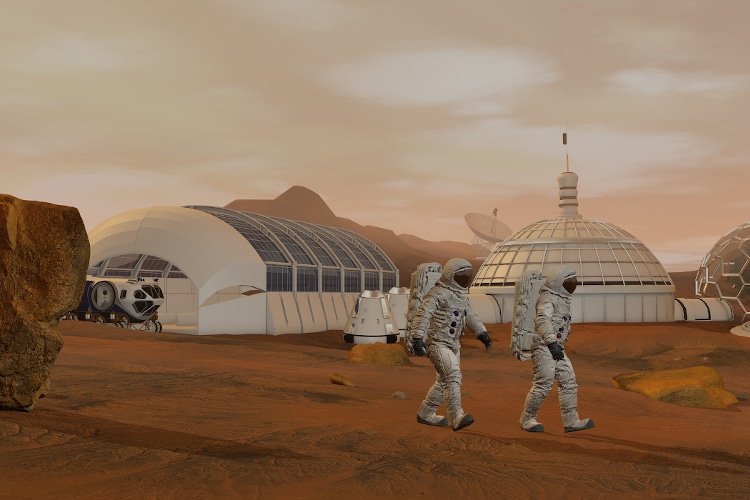
Photo: Merlinus74/Depositphotos
Humans have long dreamed of colonizing Mars. So far, the main obstacles seem to lie in the realm of technology. From building spaceships that can make the journey to setting up a camp and growing food, sending people to the Red Planet is tricky on many levels. But then, there’s also the human factor itself. A study by researchers from George Mason University in Fairfax, Virginia, aimed to determine how many people were needed for a thriving Mars colony, but they didn’t expect to find what one type of personality simply would not do well on the Red Planet.
Researchers ran multiple 28-year simulations to figure out the ideal number of colony members for the best chance of survival. Unlike a previous study, where 110 people were needed for a self-sustainable colony, they envisioned a Martian community that had already been constructed, with power, food, air, and water produced or sourced locally. In their model, the colony would receive regular supplies from Earth, and new people would arrive upon the death of a member to keep everything running efficiently.
Since us humans aren’t all the same, they established four personality types to see how their interactions would shape the community. There were the “Agreeables,” low on competitiveness and aggression; “Socials,” the extroverted who needed interactions; “Reactives,” or those with “competitive interpersonal orientation” and “fixated on stringent routines;” and finally, the “Neurotics,” those who are aggressive, highly competitive and couldn’t cope with boredom and change.
To get their number—considering accidents and shortages of resources—they gave each colony member a life bar that could be depleted. After running their simulations, they came to the conclusion that the lowest number of people required to sustain a colony was 22. But they also noticed that neurotics had a much higher death rate than their counterparts.
“The primary observed emergent phenomenon occurs in the decline of the Martian population,” the team explained. “While the members of the settlement have an equal probability of being affected by lack of settlement resources, habitat accidents, or earth shipping disasters, Martians with the ‘neurotic’ psychology die at a much higher rate than those of other psychologies.”
Also, the less neurotics in the colony, the better it did. “Martians with the neurotic psychology and a high coping capacity benefit the least from interaction with other Martians, and are penalized the most if they have a low coping capacity. Our results suggest that this effect is a driver of the Martian population decline, and once minimized or removed, can produce a stable settlement.”
While this is just on paper, it makes a compelling argument for why those with the “neurotic” personality would struggle to thrive in the stressful environment of an off-earth community with so much at stake. Still, findings like this will definitely help future missions get their ideal crew members. Because no matter how advance our tech gets, those operating it are human after all.
A study by researchers from George Mason University in Fairfax, Virginia, aimed to determine how many people were needed for a thriving Mars colony…

Photo: Merlinus74/Depositphotos
…but they didn’t expect to find what one type of personality would not do well on the Red Planet.

Photo: Merlinus74/Depositphotos
“Neurotics,” those who are aggressive, highly competitive and couldn’t cope with boredom and change, had a much higher death rate than their peers in their simulations.

Photo: Merlinus74/Depositphotos
h/t: [IFL Science]
Related Articles:
Curiosity Rover Has Been Climbing a Mountain on Mars Since 2014
European Space Agency Releases New High-Resolution Photos of Mars
Four Volunteers Entered NASA’s Mars Simulation Where They Will Live for Over a Year
Stargazers Can Construct the NASA Mars Rover in New LEGO Set
